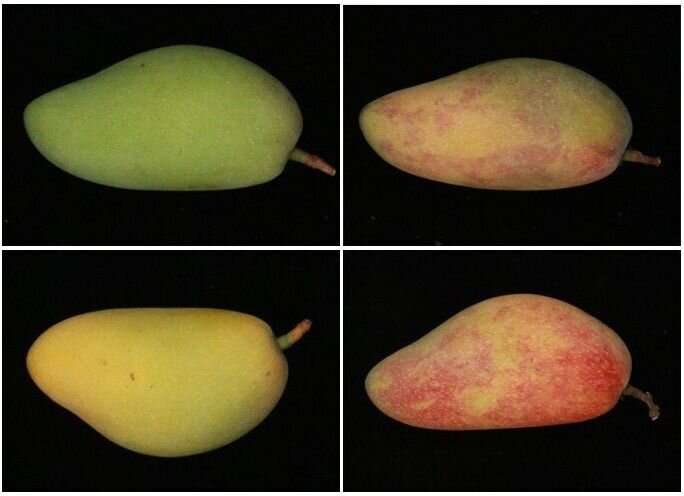Blue light might be bad for humans—but good for mangoes

We're often told to limit our "screen time," thanks in part to the harsh blue light that screens can emit. Plants can detect blue light too, but instead of causing sleepless nights for our green friends, it could help make their fruits taste better. Researchers now report in the Journal of Agricultural and Food Chemistry that mangoes can become redder, sweeter and more ripe when exposed to blue light over several days.
Plants rely on sunlight to carry out photosynthesis and ripen their fruits. Studies have shown that exposure to light can affect the appearance of some fruits' peels and can increase the amount of sugar and pigments in fruits such as tomatoes, which contain chlorophyll throughout their flesh. However, other fruits such as mangoes only contain this pigment in their thick peels, which could change how light affects the flesh.
Plus, sunlight contains many colors, so different wavelengths could have different effects. So, Yuanwen Teng and colleagues wanted to investigate how blue light impacts the quality and ripeness of mangoes.
To understand this phenomenon, the researchers placed a group of mangoes in blue light and another group in darkness for nine days. They found that mangoes in blue light contained far more anthocyanins in their peels, making them redder than those left in the dark. The flesh of these mangoes was also softer, sweeter and more yellow, and had more sucrose and carotenoids than the other group.
In further tests, the team found that light-responsive genes involved in the photosynthesis pathway, as well as key genes involved in producing sucrose, anthocyanin and carotenoids, were upregulated under blue light. This meant that the mangoes could directly perceive this light and trigger an internal genetic signaling pathway, say the researchers.
The effect was more pronounced in the peel than in the flesh, indicating that the blue light did not penetrate much past the skin. The researchers say that this work could help shed light on the complex relationship behind colored light and the internal quality of fruit.
More information: Junbei Ni et al, Blue Light Simultaneously Induces Peel Anthocyanin Biosynthesis and Flesh Carotenoid/Sucrose Biosynthesis in Mango Fruit, Journal of Agricultural and Food Chemistry (2022). DOI: 10.1021/acs.jafc.2c07137
Journal information: Journal of Agricultural and Food Chemistry
Provided by American Chemical Society





















